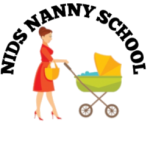THEORY
Subjects of Study
- Importance of safety and general precautions observed in the Institute and in the section. Importance of the trade in the development of child. Recreational, medical facilities and other extracurricular activities of the Institute. Importance of keeping Diary containing detailed information such as Doctor’s Name, Name of the Hospital (nearest Hospital), contact Phone No. Of Fire, Police, Hospital etc.
- Personal Hygiene & Hygiene Environment, Concepts of environmental hazards & Concept of healthy environment
- Developmental characteristics of different age group of children. Different activities for promoting the different areas of development. Source of different materials for the activities. Principles of program me planning (long term and Short term), time table construction.
- Basic Nutrition, Nutritional needs of children. Preparation and storage of food. Hygienic food and feeding practices, Health and hygienic needs of children.
- Principle of child growth and development. Play and activities to facilitate normal growth and development. Factors affecting physical and motor development. Characteristics of children with special needs (physical and motor disabilities).
- Importance of sensory development and training. Process and importance of concept formation. Development of some concepts like time, number, form, color, shape, size, sound and rhythm, living and non-living. Development of cognitive abilities such as memory, thinking, reasoning and problem solving. Factors affecting cognitive development. Deviations from normal cognitive development.
- Stages of language development. Development of language skills. Significance and relation between language and cognition. Speech defects in children. Reading and writing readiness. Importance of pronunciation in early childhood. Aids to promote language development.
- Pattern and importance of social development. Importance of social play. Characteristics of children emotions. Common emotions of childhood and their importance in development. Emotional and behavioral problems in children. Development of self-dependent skills. Child abuse signs, prevention and reporting.
- Different methods of training such as demonstration, discussion, practical work and use of pictorial materials. Institutional rules and regulations. Desirable and undesirable behavior of workers (e.g. cleanliness interacts with parents, children and staff). Duties performed by crèche workers/helpers.
- Communication skills, English or local language, Special skills and registration required Visit to different family and Pre school (Optional).
PRACTICAL
Subjects of Study
- Familiarization with the Institute. Importance of equipment’s used in the trade. Type of work done by the trainee in the institute. Type of jobs made by the trainees in the trade. Introduction to safety equipment and their uses etc.
- Identifying environmental hazardous articles. Personal Hygiene & Hygiene Environment, Concepts of environmental hazards: – Electrical, mechanical, fire, drugs, chemicals, sharp/pointed articles. Ensuring proper healthy environment. Maintaining health card. Managing children suffering from communicable diseases. Providing proper custodial care. Ensuing immunization in time.
- Planning the program me for child in a day and implementing it. Keeping records, and reporting to the family of any daily incident.
- Planning meals for different age group. Making feeding schedule for different age group. Preparing, storing and serving food in proper time and manner. Informing parents about child’s nutritional needs. Developing desirable health practices among children.
- Preparing proper program me of play and rest. Organizing activities to facilitate physical development. Observing physical and motor development of children. Planning and organizing activities according to developmental level, needs and interest of children. Identify children with special needs. Maintaining growth and health records. Organizing outdoor and indoor play activities for different development.
- Organizing specific activities for development of different senses. Providing experiences to children for development of various concepts and classification of skills. Organizing activities for development of memory, thinking, reasoning problem solving. Identifying deviations from normal cognitive development. Providing appropriate compensatory enriched experiences for identified children.
- Conducting free conversation with children. Inculcating sprit of enquiry and experimentation in the children. Identifying indigenous materials and utilizing them for improvising aids/apparatus for cognitive development. Observing children’s language acquisition and use. Encouraging children to talk among themselves during plays and other activities. Selecting appropriate stories and narrates them effectively. Selecting appropriate rhymes and teaches their recitation with expression. Preparing and use puppets. Organizing and conducting language games. Use of creative drama and role play for language development. Communicating with children at their level. Responding verbally to infants in an appropriate way. Playing infant games with children. Pronounce correctly and speech fluently.
- Ability to observe play pattern of children. Providing opportunities to children to express emotions in socially desirable behavior like sharing, co-operation and helping. Providing sufficient physical contact to infants. Taking behavioral problems of children. Establishing and maintaining contact with Parents regarding behavior of children.
- Planning training according to the type and experience needed for each category of workers and methods of implementing them. Providing appropriate work experiences to the workers to work with infants. Ensuring that the workers incorporate their learning in day-to-day use. Inculcating sense of responsibility and emotional involvement amongst the worker. Identifying the gap in knowledge, skills and attitudes of workers and helpers. Checking the habits, manners and type of interaction of the workers with children, parents and co-workers.

